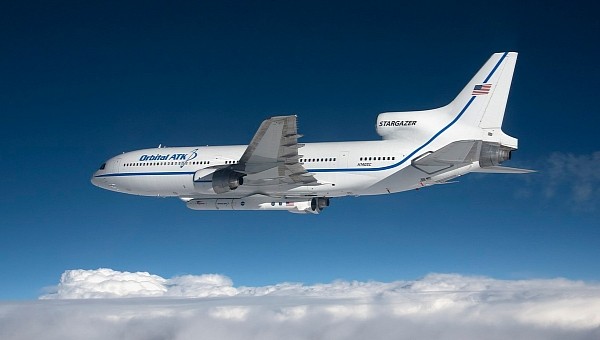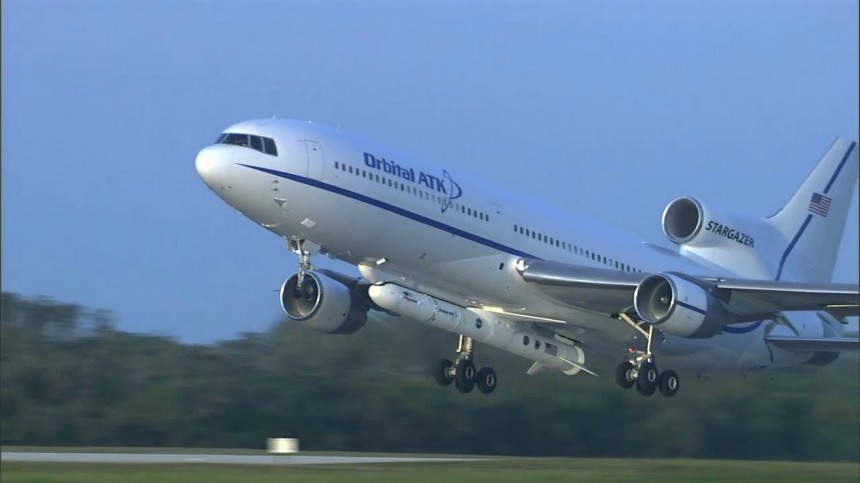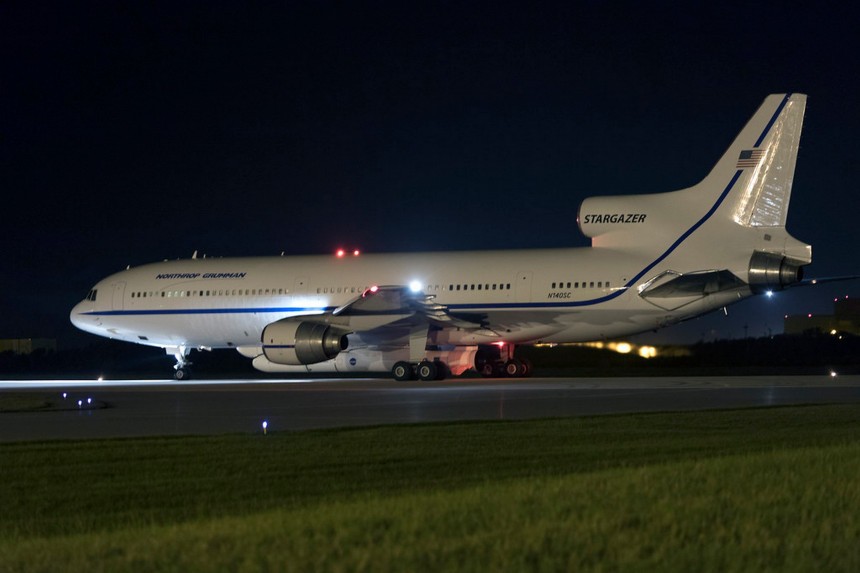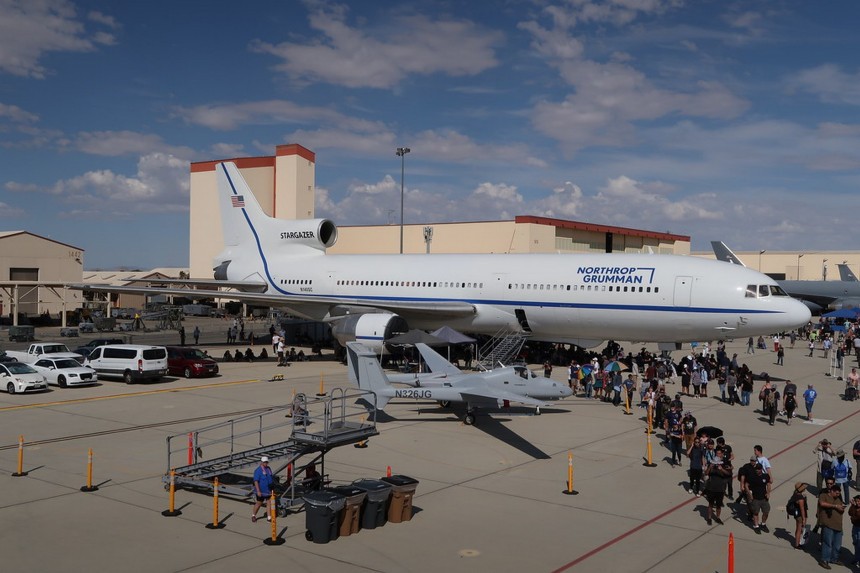In the 21st century, spotting a Lockheed L-1011 TriStar in the sky is like spotting a dodo right before the species went kaput. In 2023, there's only one TriStar left in service. Don't think it's with some humdrum cargo carrier like other down-bad airliners.
This is Stargazer, a jet that single-handedly takes the notion the L-1011 is lame and leaves it in smoke. As the last airworthy TriStar still kicking around, Stargazer spends its days launching space rockets instead of carrying tourists around. With its sibling airplanes having been grounded for at least a decade and likely far longer, Stargazer is like the Wall-E of airliners.
Wouldn't you know it, Rolls-Royce, who Lockheed selected to power the TriStar, went into financial receivership just as work on the first production L-1011 airframes was due to begin. It turned out the British aerospace sector wasn't all that much less hectic and in disarray than its automotive sector in the late 60s and early 70s.
One would assume Lockheed checked to see if the engine suppliers for their shiny new airliner were on the brink of collapse before they signed the contract. Jokes aside, only an influx of subsidies via the British parliament prevented Rolls-Royce from going belly up. It's likely they would've taken Lockheed's civil aviation division down with it had the company collapsed.
Any lead in development time Lockheed may have had in the late 1960s was up in smoke by 1968. Thanks to the Rolls-Royce debacle, the L-1011 TriStar didn't deploy ahead of the pack but instead in the thick of the race between McDonnell-Douglas and Boeing. Throw the Airbus A300 in the mix in 1972, and it was clear to most the industry wasn't big enough for a fourth wide-body airliner.
Benefits like a top-of-the-line autoland system and a lower-deck lounge configuration with room for a small cocktail lounge weren't enough to coax all but a few airlines away from Boeing, McDonnell Douglass, and Airbus. Before long, the L-1011's numbers started to dwindle. Selling off nine L-1011-500 variants to the Royal Air Force in the 1980s did little to help affairs.
Once the last of these RAF TriStars were retired in 2014, it left the Orbital Sciences Stargazer as the sole survivor. Intended to replace the famous Balls 8 NB-52B that launched both the X-15 and the Pegasus orbital launch platform, Stargazer made the most of the L-1011 TriStar's respectable technology.
The sole surviving TriStar began life as a normal example in a production run of 249 other airframes. It left the Lockheed factory in February 1974 and started serving the following month with Air Canada. It wasn't until 1992 that the Orbital Sciences company purchased the airliner, thus sealing its fate as an orbital launch platform. Orbital Sciences employed the Marshall Group of Cambridge, England, to perform the necessary modifications to prep the TriStar for air-launch to orbit (ALTO) service.
The Pegasus rocket system was first released from the belly of a TriStar on June 27th, 1994. Launches took place on both the U.S. East and West Coast via Vandenberg Air Force Base and the Kennedy Space Center, respectively. This helped the Pegasus launch vehicle become one of the most flexible platforms in its market segment. Even the Pegasus XL, with its 50,990 lb (23,130 kg) dry mass, is no sweat for Stargazer. Despite the TriStar's failure as a civilian airliner, it's turned out to be a remarkably reliable launch vehicle.
With 45 launches carrying upwards of 100 satellites under its belt, Stargazer was kept in service even as Northrop Grumman acquired Orbital Sciences in 2018. Meaning, of course, an airliner built by what would become Lockheed Martin now has the logo of their perennial rivals stuck across the side. From weather satellites to cube-sats and even a few classified military payloads, Stargazer serves as a fine ambassador for ALTO platforms.
As for the future of the last airworthy TriStar? Well, its 50th birthday is coming up in 2024. Even the most hearty and dependable jetliners in the world aren't expected to operate much longer than half a century. With the Scaled Composites Stratolaunch flying for the first time in 2019, it's clear the new world's largest airplane will one day fully usurp the Stargazer. When this day comes is anyone's guess. But regardless, Stargazer is perhaps the brightest moment in the life of an airliner which most regard as a failure.
Check back in soon for more wacky and interesting vintage aviation profiles from around the world here on autoevolution.
A bridge too far for Lockheed
You could make the argument the Lockheed L-1011 TriStar was doomed before it even took its first flight in November 1970. That's in spite of how successful the company may have been in the military sector at the time. With the McDonnell Douglas DC-10 and Boeing 747 slugging it out on the regular in those days, it was anyone's guess if the industry could support a third option in the airliner space. Playing third fiddle to Boeing and McDonnell Douglas was just the tip of the problematic iceberg Lockheed contended with in the civilian airliner space.Wouldn't you know it, Rolls-Royce, who Lockheed selected to power the TriStar, went into financial receivership just as work on the first production L-1011 airframes was due to begin. It turned out the British aerospace sector wasn't all that much less hectic and in disarray than its automotive sector in the late 60s and early 70s.
One would assume Lockheed checked to see if the engine suppliers for their shiny new airliner were on the brink of collapse before they signed the contract. Jokes aside, only an influx of subsidies via the British parliament prevented Rolls-Royce from going belly up. It's likely they would've taken Lockheed's civil aviation division down with it had the company collapsed.
The last of a dying breed
Only 250 L-1011 TriStars were built between 1968 and 1984, all sporting three Rolls-Royce RB-211 high-bypass turbofan engines that caused all the fuss in the first place. Though not a complete failure from a technology standpoint, the L-1011 needed to sell at least 500 airframes before even considering making a profit.Benefits like a top-of-the-line autoland system and a lower-deck lounge configuration with room for a small cocktail lounge weren't enough to coax all but a few airlines away from Boeing, McDonnell Douglass, and Airbus. Before long, the L-1011's numbers started to dwindle. Selling off nine L-1011-500 variants to the Royal Air Force in the 1980s did little to help affairs.
Once the last of these RAF TriStars were retired in 2014, it left the Orbital Sciences Stargazer as the sole survivor. Intended to replace the famous Balls 8 NB-52B that launched both the X-15 and the Pegasus orbital launch platform, Stargazer made the most of the L-1011 TriStar's respectable technology.
Going out with a blast, not a whimper
The upgraded Pegasus-H variant was designed to fit snugly under the TriStar's undercarriage to compensate for clearance issues between the TriStar and the base vehicle. Further modifications came from upgraded 524B4 variants of the Rolls Royce RB211 in 2010 with 50,000 lbs (220 kN of thrust each. With almost all of the interior airliner trimmings from this jet's past removed, there's very little to carry around besides the flight crew and the payload.The Pegasus rocket system was first released from the belly of a TriStar on June 27th, 1994. Launches took place on both the U.S. East and West Coast via Vandenberg Air Force Base and the Kennedy Space Center, respectively. This helped the Pegasus launch vehicle become one of the most flexible platforms in its market segment. Even the Pegasus XL, with its 50,990 lb (23,130 kg) dry mass, is no sweat for Stargazer. Despite the TriStar's failure as a civilian airliner, it's turned out to be a remarkably reliable launch vehicle.
With 45 launches carrying upwards of 100 satellites under its belt, Stargazer was kept in service even as Northrop Grumman acquired Orbital Sciences in 2018. Meaning, of course, an airliner built by what would become Lockheed Martin now has the logo of their perennial rivals stuck across the side. From weather satellites to cube-sats and even a few classified military payloads, Stargazer serves as a fine ambassador for ALTO platforms.
Check back in soon for more wacky and interesting vintage aviation profiles from around the world here on autoevolution.


















